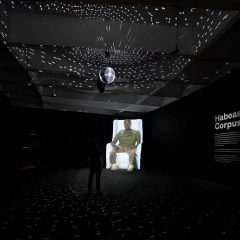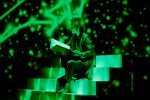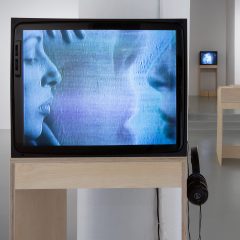Mars is the place in Pittsburgh
The theme of the upcoming 2008 Carnegie International is life on Mars.
Initial thoughts turn to evil Martians developing weapons of mass destruction that will one day rain down on our Earth as they invade to take over our melting planet. But no, we are assured that the show is about “what it means to be human in the world today.”
In fact a show about what it means to be human — and maybe by extension what the future of humankind might be — sounds, if not jolly, then at least very, very relevant to what’s on everybody’s minds these days.
Douglas Fogle, 42, curator of the International, did a PhD thesis on the history of consciousness with an emphasis on “how technology changes you. How we interact with it and how we are changed, psychologically and physically.” So I’m hoping for a lot of work with human-machine interactions, and particularly hoping for a lot of viewer-machine interactions which I’d love to see more of in art.
Space is the Place
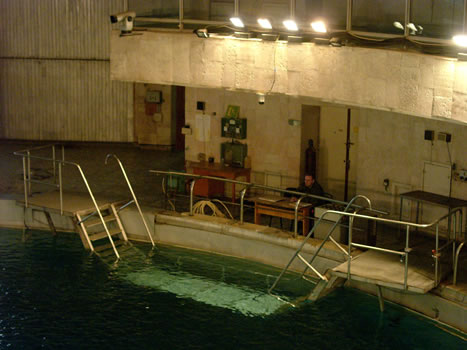
Laurie Anderson, Untitled, 2006. Photo from her tour of the Cosmonaut’s training camp in Russia. Anderson’s piece is one of several documentary style works in Space is the Place.
Meanwhile, back on earth, a show I saw at PAFA recently — Space is the Place — touches on the outer space-inner space and humans/technology themes, albeit through a narrow window of the so-called space race between the US and the old USSR during the cold war (1957-1972). It’s a show that brings up old vocabulary like cosmonaut, splashdown and space capsule. And oddly (or maybe not so odd) the 17 artists or artist-groups exhibit a surprising amount of nostalgia for the time. I guess any time an artist focuses exclusively on a past time there will be love for that time and nostalgia. And in a way, I think the choice to focus on the past may be driven in part by artists sick to death of our difficult war-torn and hard-to-love present.
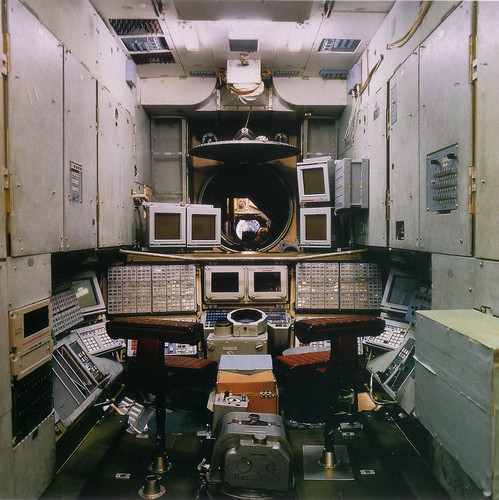
The traveling show, organized for Independent Curators International by former PAFA Curator Alex Baker and Contemporary Art Center Cincinnati Curator Toby Kamps has an international roster of artists and a catalog with an essay by Baker explaining the history of the space race and one by Kamps who talks about artists’ imaginations being caught up with this dreamy cosmic stuff.
The title of the show, lest you think it’s something Austin Powers says in one of those campy sendups of the 60s, is a reference to the title of a documentary film made in 1974 “Space is the Place“. That film, which is NOT a sendup of anything, posits that the mystical Philadelphia musician Sun Ra and his Arkestra are intergalactic space travelers on a mission to populate a new planet with African Americans–by transporting them through music. It’s too bad the show doesn’t screen the movie for it truly sounds worth watching.
Space is the Place the exhibit has works of a documentary nature and works that make an imaginative leap. Best of the documentarians are Jane and Louise Wilson with large photos of the Russian Cosmonaut training facility. The photos have some of the appeal as a wax museum or a not so well kept small boutique museum — the worn down, scuffed up rooms pictured are like used teddy bears –you’re interested because of who might have owned the thing and what they did with it and where they are now. The ancient computer monitors and manual switches and knobs pictured in Mir 2000 seem astonishing to the modern eye attuned to the iPhone’s whiz-bang finger magic. It’s incomprehensible how they made rockets fly and navigate through planetary and extra-planetary atmospheres in what seem now like tin cans fitted out with toggles and on off buttons requiring something other than a keypad or a voice to activate them.
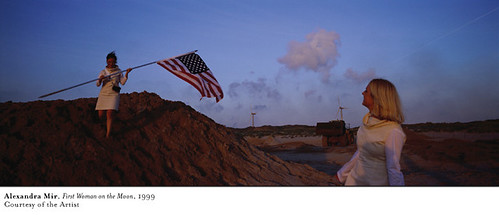
Alexandra Mir, First Woman on the Moon, 1999
For the imaginative dreamers among the artists, my votes go to Alexandra Mir (no relation to Mir 2000) whose video about the first woman on the moon (a scene re-enacted on a beach somewhere in Europe) is a great bit of play acting. And actually, this political feminist piece is about the only one without nostalgia for the space race.
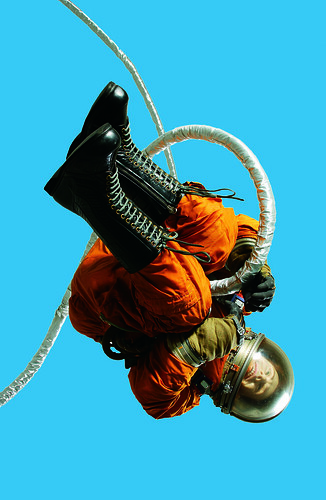
Oleg Kulik, Cosmonaut, 2003
Wax and mixed media, approximately 54 x 30 x 30 in.
Courtesy XL Gallery, Moscow
Oleg Kulik‘s free-floating Cosmonaut sculpture, a figure made with wax clothed in material that looks authentic 60s-era-correct, goes perfectly with the Wilsons’ photographs. I almost wish they artists had worked together to put the Cosmonaut inside Mir 2000. Now that would be something to behold. Kulik’s cosmonaut has subtle imperfections in his face and while I did not notice them when I saw the work in the show, the closeup photo in the show’s catalog reveals what looks like fresh stitches on the cosmonaut’s chin. Weird but not as weird as the guy’s realistic (waxy) look and his “I see angels” beatific smile.
Speaking of the catalog and seeing things, I have to take a side excursion into contemporary book publishing and complain about the use of light grey as a suitable ink color for type that actually needs to be read for comprehension. Throughout the catalog, the use of grey type on white pages makes words disappear into nothingness. If you have 20-20 vision and are maybe, say, 10 years old, you will have no trouble with this and may even enjoy the joke of watching words disappear into the page as you shift the book from one ambient light source to another in your room. For my part the grey type is not magic or silvery (like a rocket ship’s outer skin) but a mistake. Dear publishers: Books are for reading, so please do not make them hard to read by manufacturing an “arty” type color that Visibone would call 000000 ANNOYING HALLUCINATORY UGH.
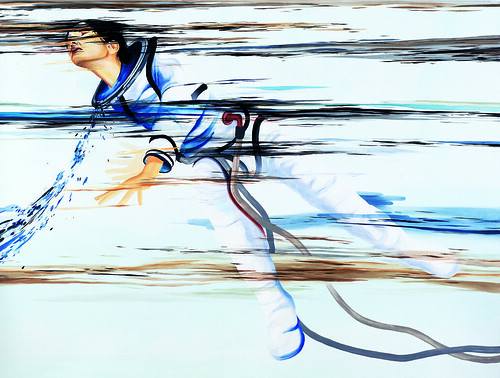
Lia Halloran, The Irreversible Downfall of Intercostal Six, 2005
Oil and flashe on canvas-wrapped panel, 72 x 96 in.
Collection of Rosette Delug, Los Angeles; courtesy of Sandroni Rey, Los Angeles
I found it odd that there were paintings in this show but there are. Adam Ross‘s on the edge of abstract landscapes suggest the Jetsons with cities in the clouds and people flitting about from one tower to another. Lia Halloran‘s paintings on the other hand are contemporary figure paintings focused — like Mir’s feminist video work — on the imagined female astronaut.
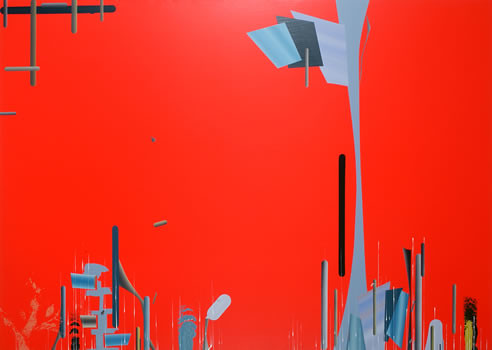
Adam Ross, The City at the Edge of Time, 08, 2004
Both Ross’s and Halloran’s works seem in the show for breadth of materials and not because they bring anything much new to the table. They are relatively conventional and less imaginative than some of the sculptures and videos.
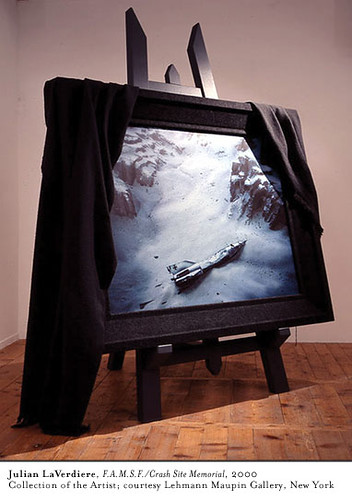
Julian LaVerdiere. F.A.M.S.F/Crash Site Memorial, 2000.
Speaking of sculpture, my favorite is Julian LaVerdiere‘s series of works that imagine a secret launching of the first rocket — back in Werner Braun‘s Nazi Germany days, something the artist mythologizes with a shrouded photo of the supposed LOST rocket at the bottom of the sea and with several more photos and a mockup of the real rocket in a glass vitrine. The level of imaginative play on the part of the artist, the the conflation of mock-love and real mockery is captivating.
Nina Kachadourian‘s black box immersion space on the other hand is far less capitvating to someone with claustrophobic tendencies. Step into the pitch black space and you get an audio piece of an astronaut stammering in exchange with NASA controllers. I couldn’t stay long enough to hear the audio.
Others in the show: Colette Gaiter, Ronald Jones, MIR Project, Damián Ortega, Marko Peljhan, Steve Roden, Jason Rogenes and Katy Schimert.
When thinking about this show I keep flashing back on Mark Dion talking in the recent Art 21 about how he’s not concerned with nature but with the ideas nature brings up…taxonomy, archiving, decay and other things. The artists in this show, likewise, seem less concerned with anything having to do with the space race or even outer space itself than they are with ideas about things “out there” that help define who we are and where we’re going. I am guessing we’ll see a number of these artists and their works in Pittsburgh come May.
Space is the Place opens in Cincinnati at CAC Feb 2 and remains there until April 13, 2008.
The 55th Carnegie International opens May 3, 2008 and continues through January 11, 2009.



